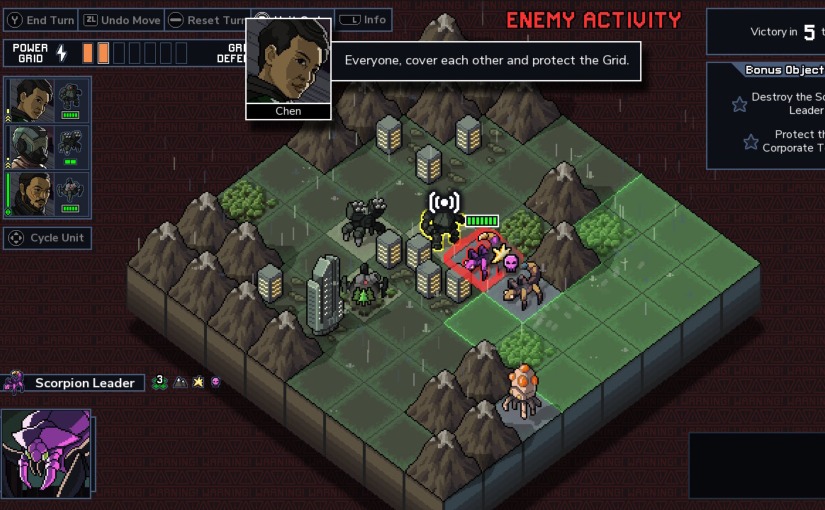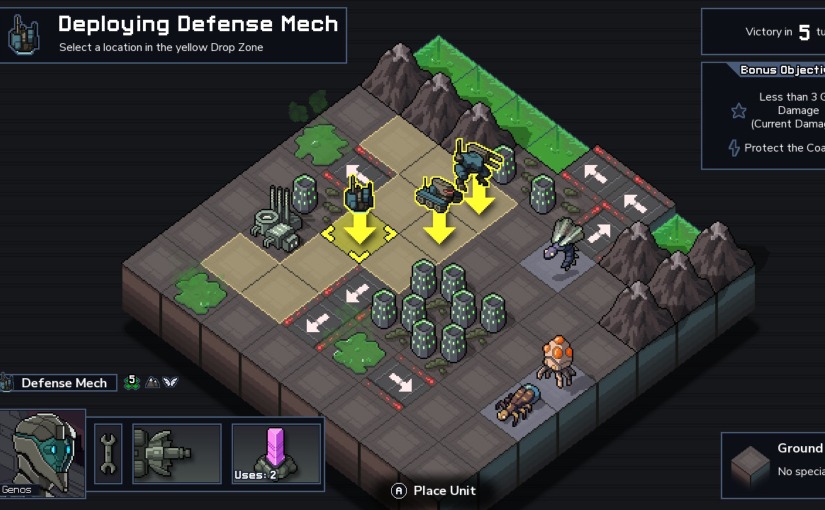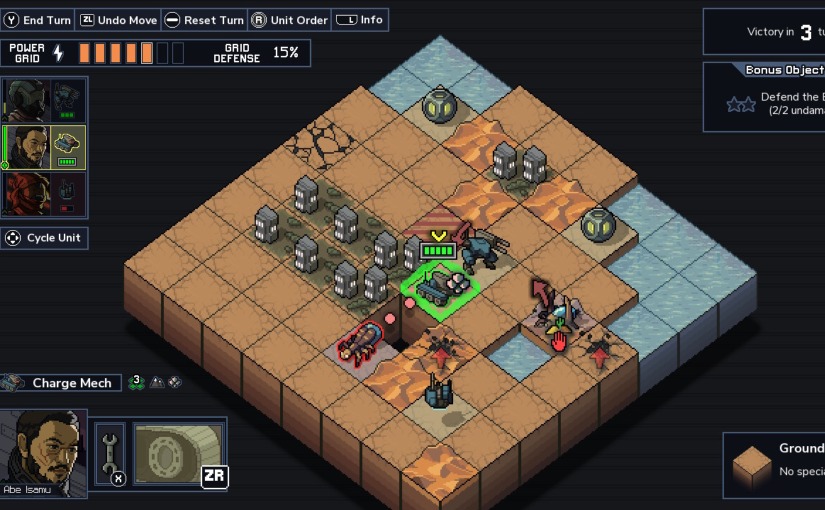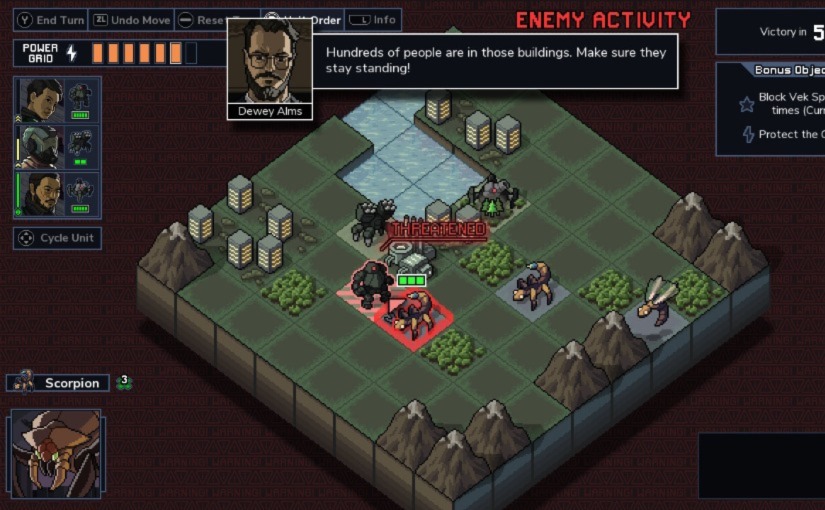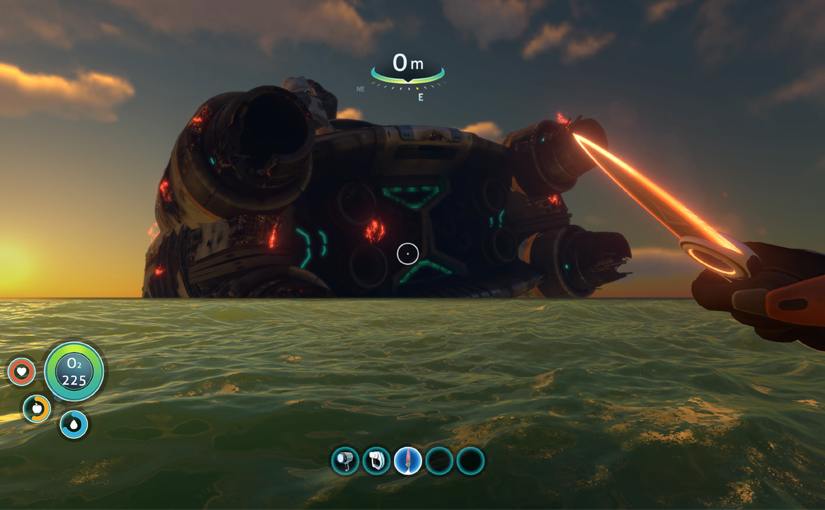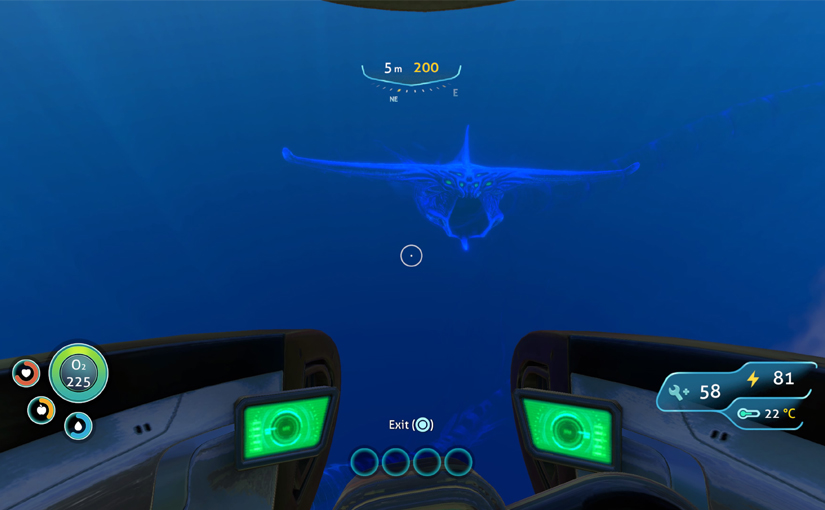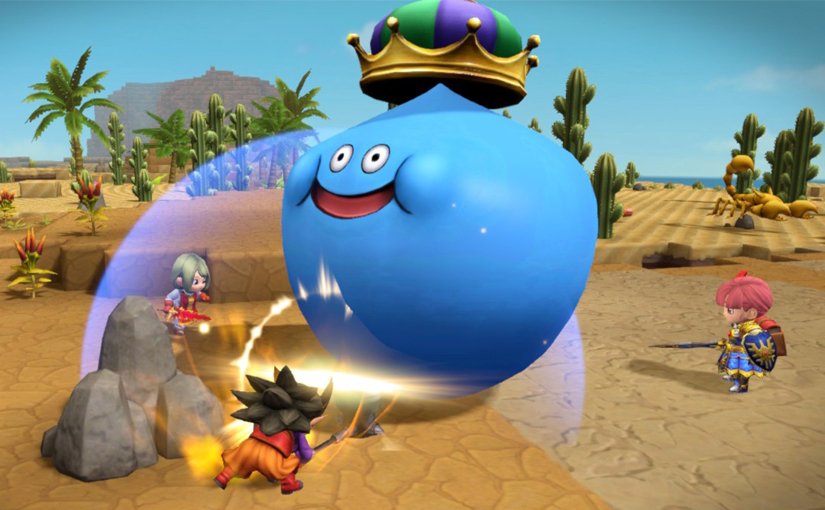Record of Lodoss War: Deedlit in Wonder Labyrinth is a Metroidvania game developed by Team Ladybug and released in 2021 across multiple formats. I picked up a physical copy of the game for the Switch because I thought it looked cool and also because I own a copy of the Dreamcast RPG, Record of Lodoss War.
The following is a spoiler-filled account of my time with the game, with some opinions and observations sprinkled throughout.
Session 1 – Tuesday 17th September
After a short break following knocking Visions of Mana on the head, it was time to play something a bit different. Record of Lodoss War: Deedlit in Wonder Labyrinth was sitting on my shelf, and I fancied a Metroidvania. I’ve never watched the anime, I’ve never read the book, and I’ve played Record of Lodoss War on the Dreamcast but barely remember anything about it. I’m also quite inexperienced with Metroidvanias (I’ve finished Metroid Dread and that Shadow Complex game on Xbox 360 and that’s about it) so this will definitely go well. Let’s go!
Right, the whole thing has a nice pixel art style (even the title screen and the developer logos) and I was treated to a minimal intro explaining that Deedlit and a group of heroes once saved the island of Lodoss, and Deedlit fell in love with one of them. She woke up in a stone circle not knowing what was going on, and control was handed over to me. Six pages of tutorial text later and it was time to adventure.

A few first impressions; the game looks very pretty, Deedlit is really nicely animated, and the music is pretty cool. The controls seem precise, and the directional attacks are fun to pull off. The game started in the aforementioned stone circle, and Deedlit and I thought we’d be traditional and headed off to the right.
Our first enemy was an imp, which we stabbed with our sword, and it dropped a spear. Deedlit equipped the spear and we moved on. There are barriers and locked doors in the next few areas that we’ll have to come back to, and enemies respawn when you go back into a previously cleared area. There’s a dice theme going on, with enemies having a pair of die displayed under their health bar, but I don’t really get it. I should have read those tutorials.
We soon found Sylphid … I mean Sylph (still thinking about Visions of Mana), which is a wind spirit that gives Deedlit wind moves and allows her to hover. We then found a statue of Marfa, who is a goddess, apparently, and this allowed us to save and regain health. That was all the Metroidvania basics covered, now it was time to go and hover somewhere.
We passed by the stone circle again and Deedlit saw someone called Parn, and then a sorceress-looking woman appeared (whose name I didn’t catch) and asked for Deedlit’s loyalty. Deedlit refused and the sorceress said something about “trials”, and mentioned that another lost soul is coming and that it will be interesting to see who gets their wish first. A while after this, there was a small underwater area, and it became clear that Deedlit cannot hold her breath for long at all.
We found a fire spirit next (called Salamander, not Salamando) and now Deedlit can swap between fire and wind modes. There’s a mechanic where you can fill up your fire and wind spirit gauges if you don’t get hit. The more full each gauge is the more damage that element of attack will do, and if one or both are completely full, it’s possible to gradually regain health. You can also absorb attacks of the same element.
Moving on, we found a place with a big, hanging, half-eaten dragon flank and hitting it caused quite a bit of slowdown (and filled the spirit gauge). We found a bow next, and Deedlit seemed to be getting kitted out pretty early. We found some spirit magic pretty soon after this, and could use some magic points to shoot a load of balls of light at enemies. Handy.
We bumped into someone called Slayn (this was, like the sorceress earlier, preceded by a kind of video glitch effect). Slayn was all vague and then he ran off. Deedlit seems to know these people but they clearly aren’t being themselves. Poor Deedlit, she must feel very isolated. She met someone called Ghim next, and he was acting weird and evasive too, but appears to be the game’s merchant. We couldn’t afford anything from him that looked good, so we moved on.
After a bit more Metroidvania-style progress, we encountered a large, snake-like dragon called Abram the Blue. Again, Deedlit seemed to recognise the dragon and tried to converse but he was hell-bent on throwing down, so we obliged. We took him out first time, and Deedlit got a Soul Crystal Ball, but we don’t know what it’s for yet.

We soon found a snake statue that granted Deedlit the ability to slide, which enabled us to explore another area through a low gap. We met a Dark Elf girl called Pirotess (Deedlit called her this but she didn’t like being identified as such). She killed us. She was quick and tough, repeatedly leaping and throwing knives. We then fell to her a second time, and I was realising that I probably needed to stop taking this game lightly now. We got her the third time. She wasn’t dead, though, and she nicked our soul orb thing before she legged it, which was very rude.

Progressing to the next area after this fight led us to “Stage 2”, which had a different vibe and a background theme that kind of looked like the inside of a great hall that’s seen better days. I felt like we’d missed stuff, so we backtracked for a bit, but the only unexplored areas I could find seemed to still need other items or keys to get to. We went back to the Stage 2 area and got killed very quickly by some nasty bird-type enemies. Things were getting real in Stage 2, it seemed. Axe-throwing kobolds, goblin archers, and big, angry birds were absolutely everywhere.
We got the video glitch again (which I now realised flashes up a large eyeball thing) and Deedlit met someone called Woodchuck. This guy seems to offer a gambling mini-game. I’m good, thanks. This last bit of progress marked the end of Session 1, and the now-traditional wall of words this entails. I’ll try to keep the entries shorter, but I can’t promise anything.

Session 2 – Tuesday 17th September
I was excited to get going again with session two, and Deedlit immediately fell into some spikes and died. We will not be discouraged! She then died in spikes again because I pressed the wrong button, and then she died again moments later because I got knocked into spikes by a giant centipede enemy, and I decided that I’m going to stop keeping count of her deaths at this point. The Stage 2 area can very appropriately be called a difficulty spike.
After some cool sections where Deedlit needed to bend her arrow shots using magnets, we encountered a boss fight in the form of a couple of Djinn type creatures, one wind-based and one fire-based, and the fight required Deedlit to use her element-swapping powers to avoid and dish out damage. We beat these guys first try, acquired the double-jump, and encountered a character called Etoh. She too, is vague and unhelpful.

After a bit more exploring the game crashed on me while trying to use one of the fast-travel points. Luckily, everything was fine when I reloaded, and I’d saved moments before.
Upon reloading, Deedlit and I made some really good progress, exploring past some green doors (because hitting one green switch seemed to open all of them) and finding a better melee weapon, but then got absolutely shafted upon returning to one of the larger rooms by a combination of charging skeletons, pixies, kobolds and spikes. We lost a lot of progress, but that’s Metroidvanias for you.
We found a power-up for the wind spirit attacks next, and then did a bit of double-jump led backtracking and found a room with four intimidating dog statues. There wasn’t really anything here and the dog statues didn’t come to life. Maybe next time. Some more backtracking saw us find a power-up for the fire spirit attacks. It’s nice to feel powered up.
We stepped into another obvious boss area (they’re marked by a green haze leading into them) after exploring most of Stage 2, and the sorceress (who Deedlit called Karla) returned. She said some stuff and then we had to fight a gigantic red dragon called Shooting Star. That’s a very cute name, but it was a very tough fight, with a green poison attack and a green orb-firing attack proving especially hard to dodge. This took three or four tries, but we got it in the end, and were led into Stage 3. This is another outside area with a misty wood in the background. I liked it. It was filled with plant-type enemies and we also spotted some harpies and zombies.
We found an appropriately sneakily hidden invisibility spell and scouted out a save point, and it was time to end the session. I had to go and get some pizzas for me and the youth because, sometimes, pizza is all you need.

Session 3 – Tuesday 17th September
At the start of this session, a ghostly man turned into a key. It was the soul of a thief, apparently, and it is supposed to open a locked door. Not the one right in front of it, though. A little further on Deedlit and I found an MP boost behind a cracked wall, and we realised we’re going to have to really keep our eyes peeled for those secrets.
We found a boomerang weapon and it’s got great damage and great range. How are we going to ever go back to a regular old sword now? Incidentally, it’s worth pointing out here that even though I’ve never played any of the Metroidvania style Castlevania games (I’ve only played Castlevania: Lords of Shadow and its sequel), Record of Lodoss War: Deedlit in Wonder Labyrinth definitely leans more towards the “Vania” half of the Metroidvania genre. Deedlit even leaves those shadowy echoes of herself as she moves around, just like the effect in Castlevania: Symphony of the Night.
Deedlit and I found a long, nicely furnished hallway area filled with zombies and demons, all of whom were easily slain with our new boomerang. We also met a new enemy called the Lesser Dragon, and this is clearly the creature that’s been slaughtered and hung to make the meat that we keep finding around the place. They’re annoying so I don’t feel bad for them.
At the end of that hallway we found the switch that opened the yellow doors, making a fair amount of new areas accessible. We checked a suspiciously blank area on the map and found a water spell that causes a cascade of water. We also encountered a creepy, shadowy enemy called a Shadow Stalker, that only becomes corporeal when Deedlit is looking away. Lobbing boomerangs and then looking away before they come back catches these shadowy fellows out, but I’m not sure how we would’ve dealt with them if we didn’t have the boomerang.

We fought some Medusa enemies with bows, who kept turning Deedlit to stone and then shooting her with arrows, and then we found another ghostly figure who gave us a key. This one was a craftsman. Deedlit then overheard Karla and Pirotess talking about reviving Ashram. I don’t know who Ashram is, but he or she sounds like bad news. Pirotess swore loyalty to Karla and Karla gave her a magic sword. We found King Kashue next. Deedlit seemed to recognise him but the familiarity was not mutual. I think he’s probably nuts (because Kashue sounds like cashew … never mind). He was as vague as everyone else and mentioned an archery training range just past him. We tried it and got an F.
Next we found a ghostly sorcerer with a key, and I wondered at this point if these are Deedlit’s pals as this guy looks familiar. A big hexagon shape in the floor had a message saying we don’t have enough keys, though. A little later, we encountered some bug-looking enemies that made the area around them dark until we smashed them. Then we found a ghostly priest with a key, and I’m pretty sure it was Etoh, so I definitely think these guys are Deedlit’s pals.
There was a fight against Karla herself next. Somehow, we got her first try, but then she transported us to a void and made us fight a female, Templar-looking warrior called Flaus. This chick killed us twice, but we got her the third time. There was no explanation after this battle as to who she was or what she had to do with Karla. We got a knight key off of a knight apparition afterwards, and this meant we could activate the hexagon. As we did so, we received an ominous message about descending into the abyss. Alright, calm down, Nietzsche.
There was another boss fight pretty soon after this, and it was Karla again followed by a horned, winged female with armour called the Demon God who summoned wolves that were seemingly made of blood. We managed to survive both of these fights on our first try, and Karla said some more vague nonsense before fleeing.
The next area is identified as Stage 4, and it has a sandy ruins feel and there is rock music playing! We found a spell called Wind Storm, and on the way to picking up this spell we were forced to fight Goblin Shamans and Valkyries. What an odd combination. Why are they teaming up against us, eh?
In a random cavern a little while later Pirotess seemingly killed Parn and Deedlit vows revenge. I wonder if Parn is the guy you play as in Record of Lodoss War on the Dreamcast.
The difficulty has really spiked again here in Stage 4, with Minotaurs, death scorpions, soul-firing mummies and flying lizard everywhere, often placed in really annoying and awkward locations. I was planning to finish up soon, but we did manage to find the underwater breathing item, and quickly nipped back to a previous area of the map using the fast travel doors to find a shadowy magic spell beyond a waterlogged section I’d noticed long ago.

That small, crocodile-killing victory was enough for the night, and the third and final session of the day came to an end.
Session 4 – Wednesday 18th September
I started up this session forgetting that Record of Lodoss War: Deedlit in Wonder Labyrinth had actually gotten really difficult lately. Just seeing the sandy brick décor of the ruins I loaded into reminded me, though.
We went straight into a boss fight, just to compound this feeling, and this one was with a huge black dragon called Narse. In the brief exchange before the fight, it was clear that Deedlit recognised this guy, too, but she didn’t seem to expect to be friends with him, like the other dragons. Some things the dragon said possibly implied that Deedlit is stuck within her own mind. Is this whole labyrinth a metaphor?
Narse was a pain in the arse. It took many deaths before Deedlit and I finally slew him. We knew what we needed to do, it was just easier said than done to do it. Narse had a really annoying attack where he’d create alternating screen-high walls of fire and wind power and zap Deedlit with pink lasers, and it was really giving us trouble. We were gradually getting the hang of avoiding it each time, but when we actually beat the dragon we managed to pile on enough damage to drain his health bar before he entered that phase.

Beyond Narse was the button that opened the red doors. We went through a nearby red door and found some new rooms, and we spotted Pirotess in a save room. I found my self using a tactic I’d used before here, where I’d been taking advantage of the quick room transitions and respawning enemies to farm spirit gauge. It’s viable but it can slow the pace a bit.
We quickly came to another boss fight, and sure enough, it was Pirotess again. It was another tough one, Deedlit fell many times, but we got her in the end. I like the bosses in this game. They really start to ramp up in difficulty after Stage 1, but if you get killed, you always feel like you can beat them if you try again. It’s easy to retry thinking “next time I just need to do this differently” and eventually, something will work and you’ll achieve victory. It’s good, and I’ll maintain this opinion until I get to something I can’t beat later.
Some story developments occurred after this battle, as Pirotess seemed to use her life force to resurrect Ashram. The camera cut to a spooky throne somewhere that looked like it had the opening area’s background, and a scary, warrior-king-looking fellow appeared on it. Ashram, I presume? After this, Deedlit woke up in what might have been her house with all of her items and abilities (save the rapier that she started the game with) missing. There was a sword in a nearby cabinet called “Heritage” that Deedlit could pick up and equip, but upon slashing it she’d go through a very long animation of trying to heave it back up. Symbolism? I don’t know enough about Deedlit’s lore to be sure.
There were enemies outside the house called Lifeless Kings that looked like reapers crossed with sorcerers. Deedlit could only do scratch damage to them, so we decided to run past them, although this was easier said than done as the last one was very annoyingly positioned. Deedlit’s pals were beyond this area, but they looked all desaturated and faceless. They would turn around whenever Deedlit walked past them, implying that she couldn’t look at their faces. Standing next to them made them disappear, and then Deedlit woke up in the boss arena again.
Moving on took us to Stage 5 (every time there’s a new stage a six-sided die is used to show the stage’s number, so I’m assuming there will be six total) and it has a grand mansion vibe with spooky green flames in the fireplaces and on the candlesticks. Sometimes this game really reminds me of Rogue Legacy, visually at least. That’s a Roguelike, not a Metroidvania, though. The first enemy we encountered here was a large griffon, but we didn’t get far before I had to save and quit. Other responsibilities were calling.
Session 5 – Wednesday 18th September
I had a late session tonight accompanied by some chocolate digestives. Deliciously sustained, Deedlit and I dove into the new Stage 5 area. New enemies types found here included; claw beasts (pale lions that never landed a hit on us once), earth magic-flinging gnomes, and giant spiders who skittered around rather creepily on the back walls. Incidentally, I found that Deedlit could now handle the aforementioned “heritage” sword with ease, but only because we’d found a better sword, as well as a handy homing bow.
I had another game-closing crash following fast travel after this. Like last time, a reload solved it and I’d saved moments before. Annoying but not game breaking.
A little more progress resulted in us finding another boss room and a bit more video tape fuzz. This time we were greeted by a cloaked, armoured guy who introduced himself as Beld. Again, Deedlit seemed to recognise him, but she called him Emperor Beld. He didn’t know anything about being an emperor, but he liked the idea, and a fight ensued. We beat him first time. I wasn’t expecting that this late into the game.
He caused a cave-in upon defeat, and Deedlit was unable to backtrack. In the next area we encountered a creepy, wooden soldier that repeatedly reanimated itself after we slew it. At first I thought it was scary, but then I realised it was a walking spirit gauge farm. After fighting this thing for a while we found the super flying double-jump item in order to gain even more height.
Following a spider and dryad infested climb Deedlit encountered Pirotess again. I thought she was a goner! She recited some more dialogue that hints at the “this whole thing is a dream” theory, and also hinted that Parn isn’t actually dead. Not that I thought he was. A very fiddly spike-filled room followed this, featuring elevators that we needed to operate by firing arrows at cog wheels, but once we got through those we found ourselves back around the area where we couldn’t backtrack due to Beld’s antics, and Deedlit and I did some exploring with the new extra jump height. We located a firestorm spell and a dryad spell.

Getting back on track, we quickly found another boss room, and Ashram was sitting on his throne in the background (although I could have sworn this wasn’t the room he appeared in during the cutscene). He stepped down and we fought, man to elf, and he had similar moves to Beld but was much tougher. We got him the third time with liberal use of the dryad spell, but he then puked green stuff and turned into a strange, green-coloured jade golem-looking thing. Deedlit was killed very quickly.
This second fight was even tougher, and every time we died we had to fight the first phase again. Luckily, we’d gotten the hang of the first fight, and handled it pretty well almost every time, but it still took us a lot of tries to get that second phase. This was a fucking tough fight. Once we finished him off, Pirotess reappeared and told Deedlit that she loved Ashram, before fading away. Looks like Deedlit and Pirotess were two sides of the same coin.
Parn appeared not long after this and led us to the purple door switch and a nice new bow. It was a dead end, though, and he’d disappeared, so definitely that whole dream theory is getting more and more likely.
I could’ve kept going, but I’d spent a lot of time on those boss fights, so it was time for bed.
Session 6 – Thursday 19th September
The die rolled six, and Deedlit and I entered Stage 6 to start this session. This next area had a semi-creepy, dark temple feel mixed with an almost technological vibe evoked by green, cuboid lights and dark stone patterned with straight lines. Weirdly, it reminded me of the alien base in Subnautica. There was also some cool, synthy music here.
There were lots of scary monsters for Deedlit to plough through; colour-changing dragon things, huge basilisks, nearly invisible dudes, and the return of the lifeless kings. This area was more of a simple monster rush than a maze. We got through it, and found the switch for the light blue doors. I noticed that there were no fast travel doors in this area so far. We still did a bit of old-fashioned backtracking and managed a very fiddly jump through different-coloured forcefields to get a not-all-that-great bow, though.

Back to the task at hand, and we met Karla again in another boss area. This time, she kicked off a boss rush! Abram, the two djinns, Shooting Star, Karla herself, Flaus (the Templar-looking woman), Demon God (the winged woman), Narse, Pirotess, and that’s as far as we got the first time. We went again, and got a bit further. Beld and then Ashram followed Pirotess, but Deedlit was killed again because I pressed the wrong button when trying to drink a potion while fighting Ashram.

We were stuck here for a while. Annoyingly, despite beating him easily when we met him earlier, and getting past him the first time we met him in this boss rush, too, Beld was proving to be the roadblock with his variety and combination of attacks. Luckily, one of Ghim’s shops was nearby, and we blew our Lodoss bucks on a load of HP and MP potions. It was the first time we’d held more than one potion.
It didn’t happen straight away, but soon we defeated Beld and Ashram, and the last fight in this hectic rush was gooey green Ashram, who we took down without issue. That whole boss rush felt pretty awesome.
The next room finally had a fast travel door (not that we used it – I was satisfied I’d found everything I was going to) and then beyond that was a section with extra-strange architecture and some trippy music. Deedlit experienced some haunting encounters with her pals in this area, all of whom said something strange, and a mysterious voice was speaking about Deedlit choosing to stay in this world. This whole area was like a spiral, and there were no monsters.

It looked like the final boss was going to be in the centre of this spiral, but we bumped into Parn first. Deedlit remembered at this point that Parn lost his life years ago. Wow. I could’ve done with that information. If I was a Lodoss enthusiast, would I have known that Parn had been dead for years? Whatever this version of Parn was, we had to fight it, and throughout the fight it took on the forms of all of Deedlit’s pals. It was a pretty easy encounter, though, and we were victorious first time.
The background changed at this point, and a huge, creepy, greenish statue (of Parn, I assume) raised up. Deedlit rejected it and it fell, and a huge eyeball creature emerged. It was the creature from the title screen and the one that briefly appeared in the video glitches. The energy bar called it Nihil.

This was another somewhat easy fight. While it did have some potent attacks that were hard to dodge, it was very easy to keep pummelling it with the water or light magic spells and keep one or both spirit gauges full so that Deedlit’s health would regenerate. I don’t remember even using a health potion, but we may have used one.
The actual Parn seemed to appear after this, and Deedlit had some words of endearment for him, then she disappeared. She woke up in the same house that she woke up in earlier in the game, but it was much brighter this time and the music was a lot friendlier. I was able to control Deedlit again and moved her outside, where she met a person called Leaf. Deedlit began to tell Leaf about all the people she encountered in the labyrinth but because Deedlit also encountered them all in real life, Leaf just thought she was talking about that and told Deedlit that “everybody knows that stuff.” Not me. I didn’t know any of that stuff. Maybe if I had I would’ve known that Parn had died years ago!

Deedlit and I continued through this pretty area with lots of birds and trees and a couple of nice, rustic buildings, and we eventually found the stone circle that the game started in (it momentarily shows the stone circle as it was at the start of the game; all dark and spooky). Deedlit seemed to finally come to terms with Parn’s death, and the credits rolled.
There is a quick post-credits scene where a young lad was in the woods calling for Deedlit. He said that she was needed because “an age of war has come to Lodoss once again”, but then a strange sound was heard and he fell to the ground. Deedlit found him and knelt next to him, and “The End” was displayed in the same spooky, green text that the game over screens have used. I have no idea what any of that is all about.
Well, I enjoyed that. It was nowhere near as complex as Metroid Dread, and much more combat focused, but it was a fun game to blast through and a nice-looking one, too. I don’t think I’ve been inspired to look into the greater franchise, but you never know. A Boss Rush mode was unlocked upon completion, but I think I’m done with Record of Lodoss War: Deedlit in Wonder Labyrinth.
I’m glad I made the journey through Deedlit’s grief-fuelled dream labyrinth, though. She has some cool boss fights floating around in her head.

***
Some additional info; I read up on the story behind Record of Lodoss War: Deedlit in Wonder Labyrinth later in the day, and found out that not only Parn, but all of Deedlit’s companions that we see throughout the adventure had died long ago. Deedlit has presumably outlived all of them due to elves in the Lodoss lore being immortal or long-lived like Tolkien’s elves. This explains why she is greeted by a character called Leaf at the end of the game, and not Slayn or Etoh or Woodchuck or someone. This gave the whole game a much more sobering tone, looking back, and Deedlit becomes an exceptionally sympathetic character.
I also learned that in the aforementioned Dreamcast game, Record of Lodoss War, you do not play as Parn, and instead play as a nameless hero resurrected to oppose an evil god. The story of that game has little to do with the greater lore of the franchise, it seems.
Sorry to any Lodoss aficionados reading, but at least I’m learning!
